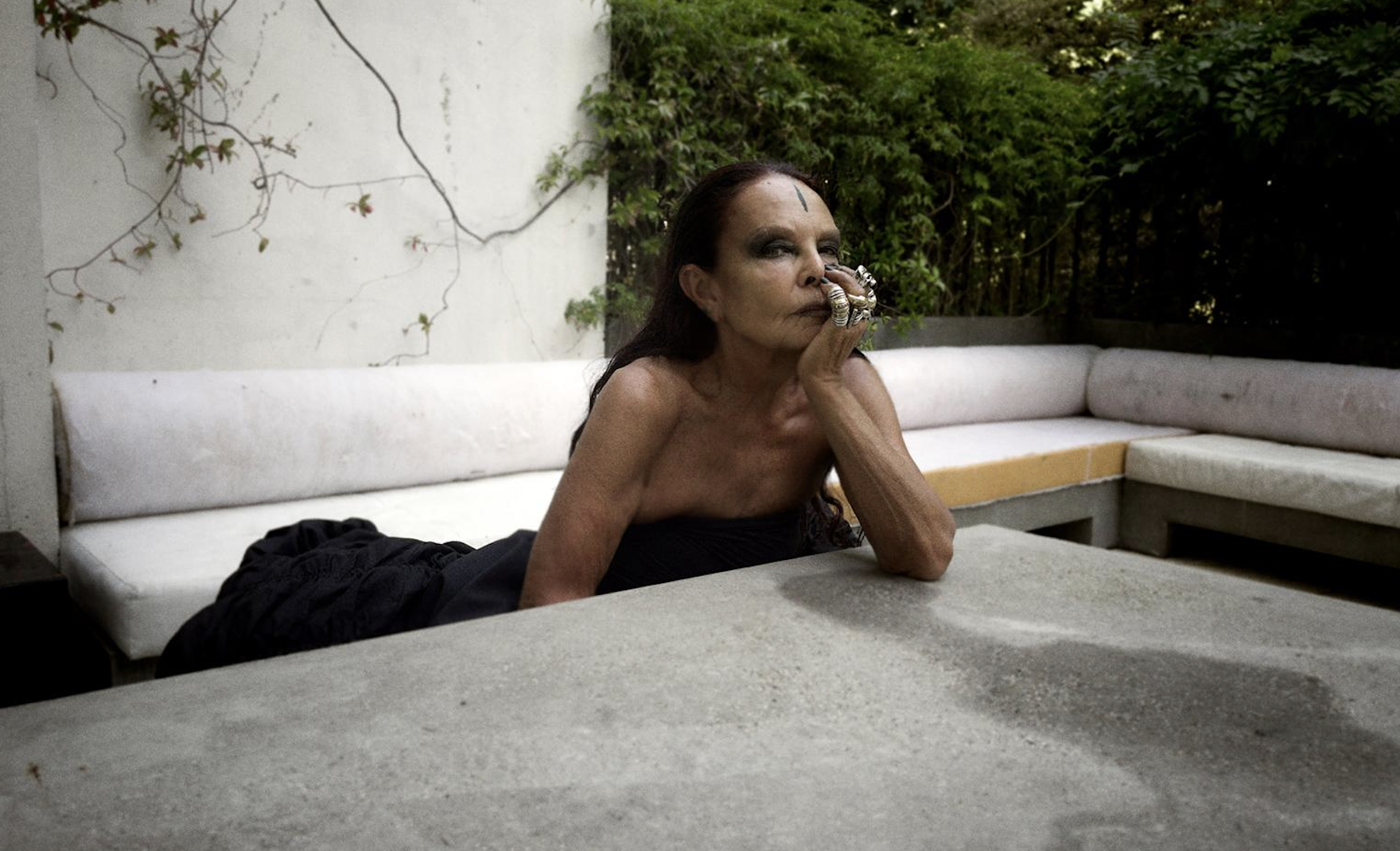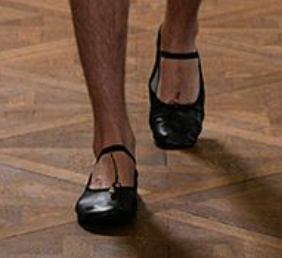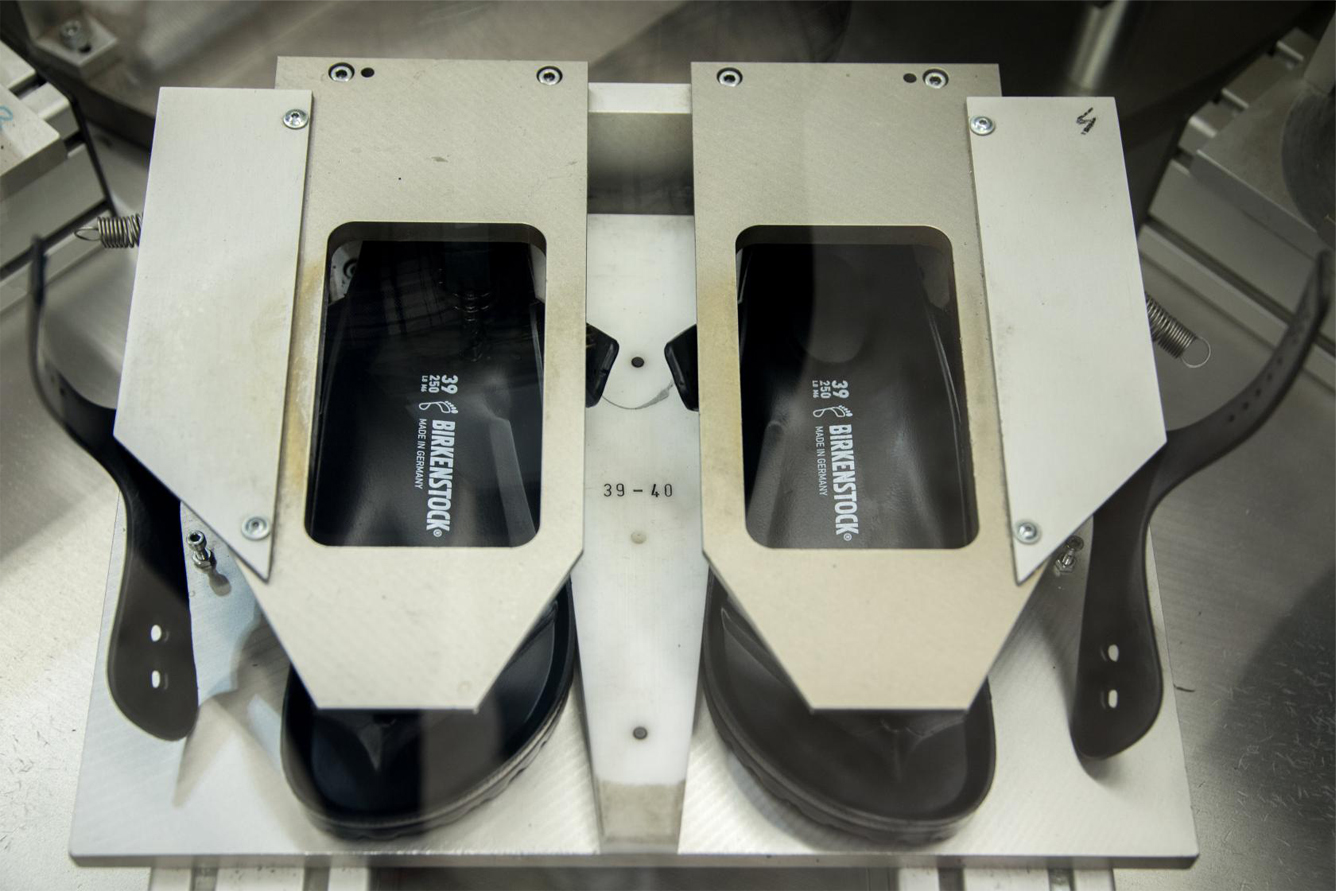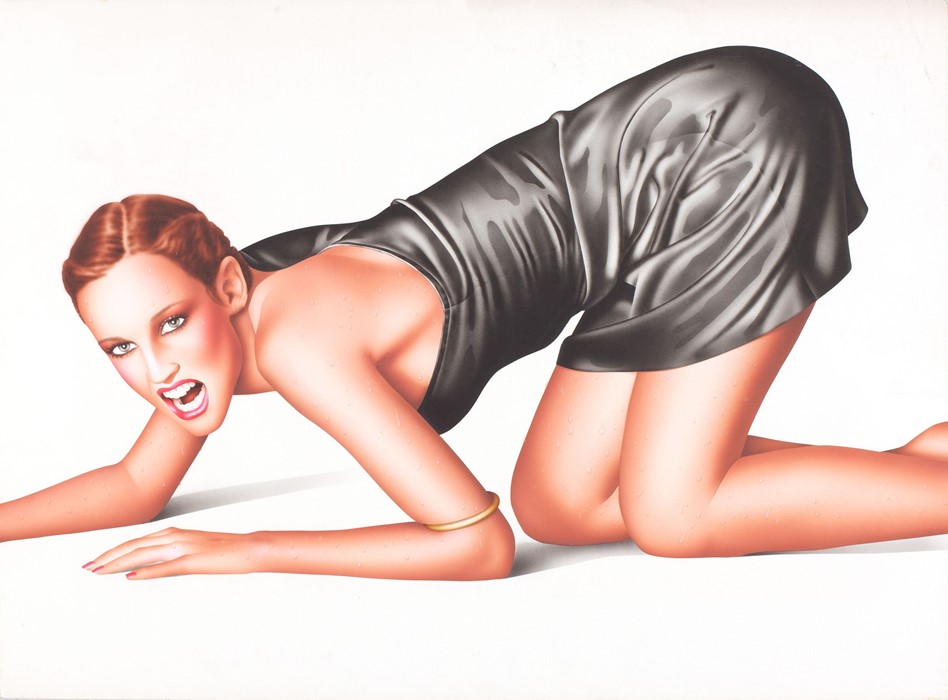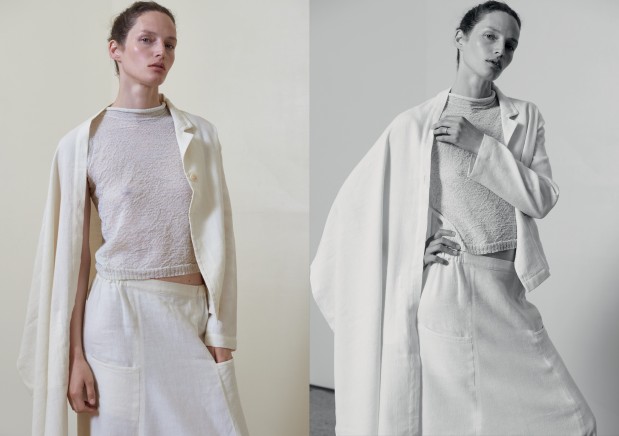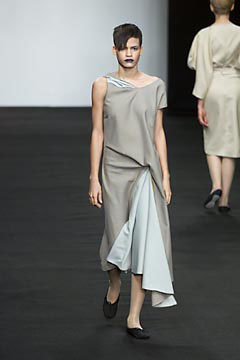2016
FOS
Published in Rika Magazine

The Inbetweener

How many hashtags would it take to encapsulate the work of an artist whose output has included cast iron door handles, gangling wire chandeliers and brass lamps, furniture, experimental video and an ice cream stand made from the detritus of an art fair? Far too many.
The Danish artist Thomas Poulsen – better known by the name FOS – devised the term ‘social design’ in 1999, whilst a final year student at the Royal Danish Academy of Fine Arts. It is shorthand for a practice that encompasses so many different forms, all of them dealing universally with the space between function, utility and social behaviour. Right now Poulsen is in the middle of setting up his new studio located in his native Copenhagen.
![]()
![]()
![]()
FOS: It is the first proper studio I have ever had. It is on the ground floor – 150 m² divided into equal rooms with a little courtyard at each end, so you have some nice light coming in. It is also underneath a Sunni Muslim mosque. And you know, I didn’t realise that the rituals had this sort of primordial feeling to them…
Dal Chodha: The call to prayer really does fill the air, it has its own physical presence in a sense.
FOS: I was there working on Friday and could hear a lot of stomping, and women wailing…a lot of feelings being spurred all-over. It was quite fascinating. One man was on a loud speaker, and there were other men and then on top of that you had the women. And because of the stomping, the corner of my roof was squeaking. It was quite a musical.
DC: What role does sound play in your work?
FOS: Usually it has been more about the sounds people create themselves as they’re moving around the show. I do listen to a lot of music and it has become a big part of my work. Just recently I made a recording studio and worked on some music as part of a little project that I have had for some years now called Small White Man. I am the conductor working with six musicians at one time. A total of 20 musicians passed through the three days of recording. SWM has a traffic light set of rules for each musician attached to a set of light bulbs. Nothing is pre-arranged so it taps into the musicians’ own references and as a result they each play in reaction to my gestures. It’s a little as you would orchestrate a social gathering where everybody is reacting to their own references but this is a musical reaction. You only need two tones to have a musical landscape. Nothing becomes something by itself. This system of light bulbs erases and enhances the common sense of both players and conductor, uniting the two into a third organism. I called what I was doing ‘social design’ but since then I’ve seen a lot more use of the term and more and more work that looks at these themes.
DC: You talked about the ‘reaction’ that musicians have to their own references and how you choose to construct them. At its core, this sense of creating a frame of space, is always about response isn’t it?
FOS: Yes, it is. Using the environment as a conductor to react to a specific situation. Environments create platforms from which a situation can arise, but then you can place another situation on top of it. But this is a very specific part of my practice. I have done several sort of stages, bars and platforms, the sorts of things in which you can set a social situation; you create a social frame and include a specific programme that deals with certain issues. A slight twist of the real, one could say.
DC: In 2013, Mark Sladen wrote in ArtReview that you seemed interested in ‘rewiring’ the reality around you. Are the issues you’re surveying constantly changing or are you always trying to discuss something more universal?
FOS: I’m interested in what defines a social structure, since we can use many analogies to define what a social behaviour is. We could talk about the structure of economy or swarm intelligence, or the Gestalt. There can be many sorts of issues that somehow describe what a social body is. So maybe, I guess, that many of these platforms define a periphery, which then in the end maybe defines the centre. I constantly evolve around this idea of things that have structures within structures that accumulate a function, whilst also accumulating something within themselves. Just like with the brain, we each understand how it looks and feels to have one, but we don’t understand the brain itself since it belongs to a larger universe.
DC: How do you think you became so attuned to your surroundings? Growing up, your grandfather had a modernist furniture shop and your father worked in there, right? I wondered how much of this has influenced your thoughts on objects and how they go on to occupy spaces?
FOS: Unconsciously I guess I understood that these forms existed, so when I was in my third year at the Academy…and realised that maybe I was going to be an artist, these early memories released a specific perspective. I think the idea of design has always been of an interest to me. There is something greatly satisfying about a good chair – it’s very spiritual because it has these three dimensions. It has an artistic message communicated in the material, it has a specific function that also releases the idea of how to express yourself and of course, it has a sculptural quality. It sits right in-between man’s function to object. It makes it easier for people to like it, that’s for sure.
DC: So chairs have some kind of universal credibility, both functional and aesthetic? They can be art and design.
FOS: That’s probably also why design is so greatly appreciated these days. You are seeing more and more interiors magazines and people thinking much more about formulating their entire space. It shows that there’s a better understanding of what is tactile and what is a material. This leads, hopefully, to a better understanding of contemporary art.
DC: Yet, there’s this fascinating contradiction, that we’re living more and more in a digital world, closed off from our physical environments yet, from what you’re saying, people are in some ways becoming more aware of touch.
FOS: This consciousness to material is in parallel to this Hertzian space we’re moving into. This idea that when you sit on a bus, 90% of the people on there are just vessels. They are there, but not present because they are all on social media or just somewhere else. We’re living in a liquidised society where the boarders and boundaries are shaken up, the public space is being somewhere but texting somewhere else; being in lots of different situations at the same time.
DC: Is this why you don’t participate with social media?
FOS: It took me a long time to get a mobile in the first place because of these issues. I don’t know if I’m anti as such, I just think I’m really aware of it. I’m sure that when I get it, I will be one of those people on the bus.
DC: In 2010 you wrote: ‘I see the world as constituted of layers, only a small part of it visible to us and existing as a reaction of what lies underneath; 3D is a shadow of 4D.’ You’re looking at spaces that archive significance through social interaction, yet, largely our social spaces have moved online. In A Collection of Dark to Light Greens (2008) your vitrines frame collections of objects that make up a larger story. You made some for Céline too and they made me think about Instagram accounts as the new cabinet of curiosities. This collation of social, aesthetic and cultural detritus.
FOS: We’re moving into a Meta State that devours the idea of touch. When you’re over-stimulated with something, you feel it less. As an artist, I find the image and the touch to be incredibly valuable. Yes, art has a large range of operative tools that don’t require touch, but still it needs an emotional reaction. I think that many surfaces are also trying to speak to the hands but this has become more reduced.
DC: We have immediate access to so many incredible works of art and pieces of music just from the swipe of our finger, but they’re barely tethered to any sort of reality.
FOS: Maybe we are writing a love letter or sending an angry mail, but everything is between a finger and a piece of glass. Imagine how little we are touching materials – a true experience is of course when you lift something or touch it because then your body also understands the significance of the chemical flux that’s within the material.
DC: This is why there is a lot of talk about materiality at the moment and especially art that deals with materiality.
FOS: So much of it is putting effort into psychological analysis and the liquidation of materials through social media. You do see a lot of art that tries to put material to this materiality but I think that one should just ask the material itself. For example, touching a piece of clay, there’s a certain structure in it that is revealed in a different way than in the mind. But as a consequence of this Hertzian space, we see more books about gardening and ceramics. You can’t go anywhere where there isn’t a glazed cup.
DC: For sure there has been a big return towards traditional forms of making and craft; people baking or planting vegetables or, as you say, making ceramics. We’re crying out for a sense of touch. That’s what really strikes me about the cast-iron door handles, brass lighting and display vitrines you made for Céline. When the store first opened in London, I was so moved by all of its textures, its surfaces – it’s totally seductive.
FOS: It was interesting to engage myself in that kind of project – here the focus and the framing is shifted towards the realm of design and what the object in the design language plays. I’ve always been interested and used this because of the social thoughts that I started working with. To play these out you need design. And design is the lens of how you also understand art. There are of course problems in defining what is what – the art world is looking at the design word in a certain way and design would like to stroke an artistic look, rather than dealing with its own functions.
DC: Are such distinctions ever a problem for you when you are explaining your practice?
FOS: In the installations that I have done, it has been quite important to have a table or a desk or a lamp – something that creates the tray for the situation. Much later when you’re done with these things, these design pieces are just piled up because they aren’t useful within the artistic realm. I had the opportunity to dive more into this when working with Céline and as a consequence, I also have a gallery where I sell my design pieces. But this is quite interesting because often the owner will call me and ask ‘oh, this person would like this’ or ‘I’m doing a show about this, so can you make this?’ Every time it is a moral dilemma for me because suddenly it mirrors my artistic rules about what’s authentic, what’s the copy. All these things that design is not that interested in! I’m always trying to find the balance.
DC: You seem happy to nestle down right in-between those two places. I think that’s what’s exciting about the work. It’s not paranoid.
FOS: It is so often looked at as either/or. But you need either to make the or. And you even need some architecture to frame it. These three parts I see as the father, the spirit and the holy ghost. This is the triangle that means that as humans, we have cover over our heads to not get wet, but it also introduces new languages to understand what is within. All these things we are negotiating, create the frame – that vitrine on the wall used to categorise things – like design has an ability to categorise how we can understand art.
DC: How much does your work react against Scandinavian ‘good’ taste? The culture you’re a part of is so attuned to the subtleties of great design but how does this play out in your work?
FOS: It’s an extension of it, because of course I’m blinded by good taste. You have to fight yourself out of it.
DC: How do you do that?
FOS: There is really good taste, which has somehow found attention in its shape so much that it precedes itself. And then there’s just good taste, where you understand that certain values have been acknowledged and placed within something. Hopefully these values are about life and not lifestyle. There was a time in the late forties in Denmark when the welfare state was formed and it was built around this idea of the five finger plan. Imagine if you put your palm down and spread your five fingers, the in-between is where the green parts come in. This is a sense of how Copenhagen evolved from the centre, out. Now that’s a wonderful way of thinking about how to develop a town compared to how we develop them today. There was an actual, intellectual discourse around making cities. With De Stijl and the The Bauhaus, these designers were grabbed by a group of designers here in Denmark complete with poetry, social acknowledgement and craft. All of these things came together to create this wonderful buffet. Like a Prouvé or a Le Corbusier, when I see it, I’m just touched by their mathematical form – their truth – so much so that it’s almost transcendental! These things have something unique to offer, not just lifestyle and this obsession with predicting where we’re going, as if this is something we even know.
DC: What you’re talking about is a certain erudition, an education that isn’t exclusive to one thing. Now we categorise knowledge, each of us trying to one thing and do it really well, yet those movements you talk about were created by people who did so many things. They wrote, they made pictures, they did sculpture. Today we’re becoming so specialised. If you look at arts education for example, you leave able to only do and therefore own, only one small part of your discipline. It makes it harder to read and understand how the work exists in context, which is something your work exposes.
FOS: As an artist, you’re on thin ice because commercialisation is the big black beast that’s out to get you. But for me the frame of how I could participate in the commercial world was quite free. With Céline, the work had the ability to stand out and do what it was supposed to do. It had to offer that kind of value inside the shop. Art should play a vital part of our society but so often, it is used as if to put a feather in a cap, when it should be a part of the cap itself. It should penetrate all other areas of life. Society needs to become more open to intervene and lean itself into it. We’re moving towards a more rationalised state, because our devices rationalise things for us but art has a different kind of knowledge. I can imagine that lots of people are scared to admit their true thoughts because technology is categorising and framing us. An artistic approach has the ability to allow us to express our emotions differently. Technology is just a giant amplifier and I’m surprised by the lack of criticism it has received. When you’re standing at the train station, it looks like a parody of a public space. And maybe that’s why I’m still happy with this old phone.












